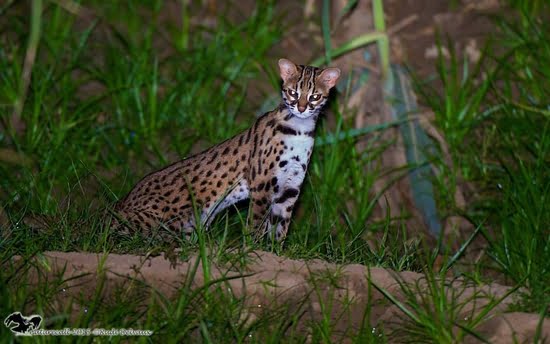Home ranging, movement and activity patterns of leopard cats (Prionailurus bengalensis) in the Kinabatangan floodplain
Home ranging, movement and activity patterns of leopard cats (Prionailurus bengalensis) and flat-headed cats (Prionailurus planiceps) cohabiting an oil palm-dominated landscape in the Lower Kinabatangan Wildlife Sanctuary
About
MSc Researcher: Amanda Wilson
Supervisors: Henry Bernard, Benoit Goossens,
University: Institute of Tropical Biology and Conservation, Universiti Malaysia Sabah
Status: Completed (February 2020 – February 2022)
Research questions:
- What is the home range of leopard cats in the Kinabatangan floodplain?
- What are the activity patterns and habitat preferences of leopard cats in the Kinabatangan floodplain?
- What are the variables that influence on the movement and activity patterns of leopard cats in the Kinabatangan floodplain?
Research overview:
The Leopard Cat Project was undertaken to better understand the ecology of this species.
The leopard cat is a small wild cat species which is a habitat generalist and adaptable and has the widest range of all wild cats; leopard cats in Sabah are common, unlike populations in certain countries. This project investigated how such a resilient species uses different habitats as they can survive in both forested as well as plantation areas.
By deploying GPS collars, their habitat was assessed using remote sensing to better understand their behaviour through monitoring their movement, particularly in the use of a fragmented landscape. The importance of different habitats in serving their niche was studied including elucidating the possible influence of certain variables towards the spatial dynamics of the leopard cats in a modified habitat or setting. Also, due to their range, the leopard cats are the perfect model species to study the health of the Bornean wild cat population, as their range may overlap with that of domestic cats and more vulnerable felids such as flat-headed cats.
The results of this project were shared with the Sabah Wildlife Department as part of the ‘The Kinabatangan Small Carnivore Project’.
We would also like to formally thank the support received from DGFC’s surrounding local oil palm companies.

